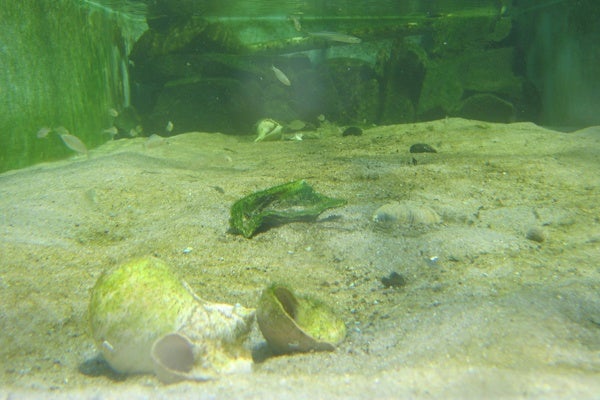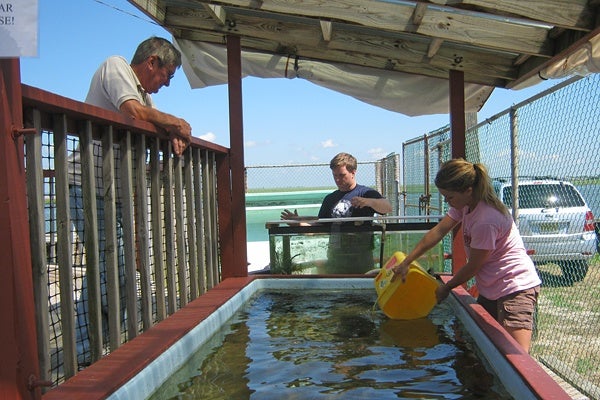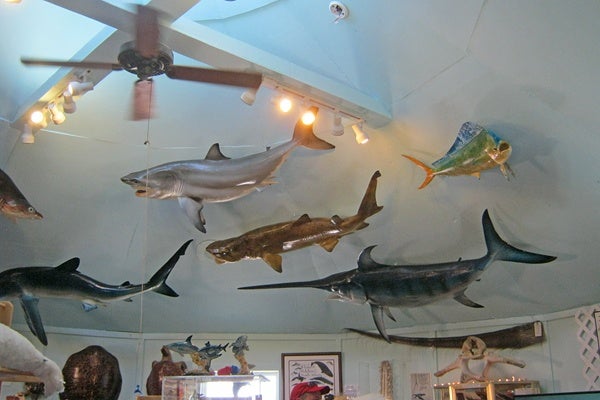Brigantine center serves as a lifeguard for marine animals
On South Jersey’s Brigantine Island and beyond, the Marine Mammal Stranding Center’s mission is to rescue, rehabilitate and release all kinds of marine animals, but sometimes the hardest part of their job is keeping curious beachgoers away from those doe-eyed seals.
MMSC museum supervisor Candie Cimino, an Absecon resident, points to a sobering newspaper story displayed in the museum. It’s about a South African woman who tried to move a basking seal into the ocean, only to have the frightened animal rear up and bite off her nose.
While seals aren’t inherently aggressive creatures, “they will defend themselves,” Cimino told NewsWorks on a visit in early July. So it’s important (not to mention federal law) for dogs, kids and grownups alike to admire these wild animals from a distance – at least 50 yards, the Center suggests – while calling MMSC or local police if you observe one on the beach in New Jersey.
Swimming with seals
Unbeknownst to many Jersey Shore natives, seals are common to the mid-Atlantic coast, but usually aren’t noticed because they tend to turn up in wintertime. Several decades ago, they were hunted nearly to extinction, but the 1972 federal Marine Mammal Protection Act outlawed the harassment or killing of any marine mammal in U.S. waters, and the population has begun to bounce back.
MMSC has rescued about 40 seals so far this year, and currently houses six Grey Seals and one Harbor Seal in its hospital pens, with troubles ranging from lacerated flippers to a possible respiratory infection.
“Not a zoo”
On the same lot, the MMSC bayside headquarters on Brigantine (just north of Atlantic City) features a 500-gallon observation tank full of fascinating creatures from the bay and a small museum and gift shop in its conical wooden building. But Cimino said that visitors often don’t understand that the Center isn’t a place to visit dolphins and seals: “this isn’t a zoo, it’s a hospital.”
Fortunately, new live-feed cameras and a donated large-screen TV in the museum let visitors look at the convalescing animals without disturbing them.
A lifeguard for marine animals
As the only full-time, fully-certified, self-supporting stranding center in New Jersey, it handles everything from injured sea turtles to beached humpback whales, responding to calls for almost 4,000 whales, dolphins, seals and sea turtles (85 so far this year) up and down New Jersey’s 1,800-mile coast, and sometimes beyond.
The rising seal populations also pose a challenge. Some fishing professionals see the fish-gobbling seals as a threat to their livelihood. The Center has recently rescued seals whose life-threatening wounds, some caused by fishing line tied around their necks, are not accidental.
“Fishermen are taking it into their own hands, shooting them now, which is illegal,” said the Center’s Co-Director Robert Schoelkopf.
And talk of seals goes hand in hand with worries about another ocean predator. Schoelkopf noted that Great White Sharks are following their prey back to the mid-Atlantic coast as the natural ecosystem is restored. But despite swimmers’ worries, sharks aren’t out to taste people, and their presence should soothe the fishermen: Sharks are a natural check on the seal population.
And as if these challenges aren’t enough, Hurricane Sandy hit the Center with $40,000 worth of damage, including a ruined generator and a boat shed that Schoelkopf said was “twisted into a pretzel…That was a costly time for us.”
The aftermath of Hurricane Sandy brought one other quandary that didn’t make the news. According to Schoelkopf, on Oct 31 the day that President Obama arrived on Brigantine to survey the damage, MMSC staff rescued a dolphin stranded in Manasquan, N.J. But when they tried to bring it to their vet at the Brigantine hospital, they weren’t allowed to re-enter the island in time.
“We had to take him to Cape May and euthanize him,” Schoelkopf said.
Climate change is also taking its toll on the animals the Center aids. Two years ago, the Center hosted a 1,100-pound manatee for two days, after it followed unseasonably warm waters up the Atlantic coast. It got too cold in Linden, N.J., and fled into the warmth of an oil refinery. Schoelkopf predicts that these southern visitors – or, in the case of one wayward Beluga whale, northern ones – will become more common.
Whales of the Jersey coast
Over the years, MMSC has also handled a variety of beached giants, including humpback whales, fin whales, right whales, and a pilot whale earlier this year in Wildwood. However, the Center is rarely able to rescue these animals.
“Usually they’re up on the beach because they’re dying,” said Schoelkopf. Experts can coordinate the removal and humane euthanasia of the whales, if needed, and send the bodies for study at the University of Pennsylvania’s New Bolton Center for veterinary medicine in Kennett Square.
Seals, on the other hand, have an excellent chance of survival at MMSC: it boasts a 90 percent recovery rate for its seals. “Best in the country,” Schoelkopf said. Sea turtles – including one rescued from a pipe at a nuclear plant – do even better.
And above all, MMSC volunteers and staff remind the public not to approach stranded marine animals or attempt to put them back in the water. Instead, help the animals by calling local police, or reaching the Marine Mammal Stranding Center hotline directly at 609-266-0538. For more information, visit their website.
WHYY is your source for fact-based, in-depth journalism and information. As a nonprofit organization, we rely on financial support from readers like you. Please give today.












